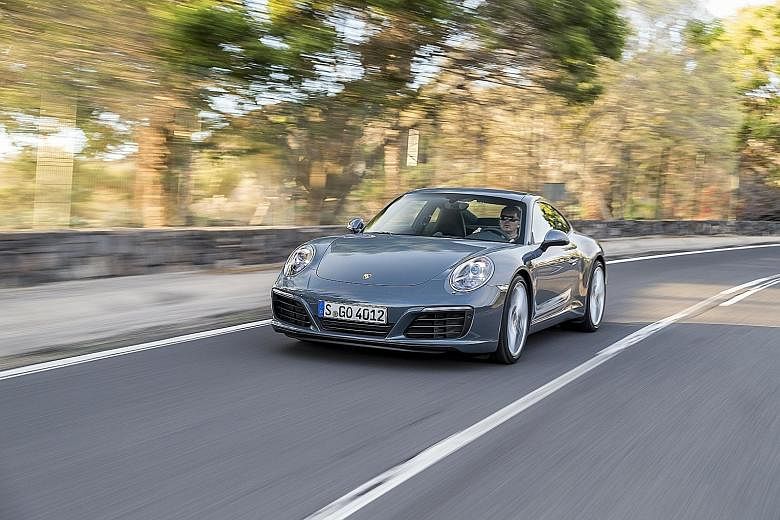Is there no end to how good Porsche's 911 can get? Well, if the latest facelift is anything to go by, the answer is simply "no".
The mid-life revision of a model launched in 2011 boasts several interesting evolutionary changes.
On the exterior, it can be identified by headlights with four LED daytime bulbs each and a restyled front bumper with active louvres that open or close depending on the car's aerodynamic and cooling requirements. There are new lights at the rear too.
The car sits 10mm lower and its suspension has the latest adaptive dampers. An interesting option now available on Carrera S models is active rear-wheel steering.
The most radical change to the 911 is the adoption of forced induction. Its flat-six engine has been downsized to 3 litres from 3.4 or 3.8 (Carrera S). There are two turbochargers located very low on either side of the engine.
-
PORSCHE 911 CARRERA S
Price: To be announced
Engine: 2,981cc 24-valve flat-six twin-turbocharged
Power: 420bhp at 6,500rpm
Torque: 500Nm at 1,700-5,000rpm
Transmission: Seven-speed dual-clutch with paddle shift
0-100kmh: 3.9 seconds
Top speed: 308kmh
Fuel consumption: 8.4 litres/100km
Agent: Stuttgart Auto
Because of plumbing associated with going turbo, there are two large apertures on the rear bumper.
Air intake for the turbos is via a slot between the engine cover grille and the rear spoiler. Some of this air is also channelled to the intercooler before exiting through the two ducts on the bumper.
The engine may be smaller, but both the Carrera and Carrera S boast a 20bhp and 60Nm increase in power and torque respectively. It used to be that the more powerful S model's higher power came from a slightly larger engine. This time, both cars use the same 3-litre engine, but the S needs only bigger turbochargers and higher boost pressure to earn its tag.
In the base Carrera, the flat-six puts out 370bhp, while in the S, it makes 420bhp. Meanwhile, the maximum 450Nm (500Nm in the S engine) of torque is produced at 1,700rpm.
The naturally aspirated 911 engines have always been known for their muscular torque delivery, but this new engine takes it one step further. Effectively, the new Carrera announces the end of naturally aspirated 911s, and that may not make every enthusiast happy. But having driven the turbocharged 911 Carrera, I find it clear that there is no reason to complain.
Porsche engineers have tuned the engine to emulate the best naturally aspirated characteristics of all 911s. There is no turbo lag and power delivery is uncannily linear. With maximum torque arriving early in the engine speed range, acceleration is immediate and super smooth. Contributing to the new car's eager performance is the familiar seven-speed PDK.
Interestingly, the gear lever now shifts down when you push forward and up when you pull back, a pattern opposite to what we have seen in PDK transmissions.
The S sprints to 100kmh in 3.9 seconds, making it the first Carrera to crack the 4-second barrier.
On the sinuous mountain roads of Tenerife, the 911 is not just incredibly quick from point to point, but also stable and precise around all corners. The wide torque spread is extremely useful, allowing the Carrera to accelerate quickly out of slow corners, thus maintaining a devastating pace. Grip at both ends of the car is prodigious.
The electrically assisted steering works brilliantly and is now as good as any hydraulic system.
Inside, there is an upgraded Porsche Communication Management, which now has online navigation and a touchscreen, among other modern-day features.
Of more interest to the Porsche driver is a new rotary mode switch on the steering. This allows the selection of Normal, Sport and Sport-Plus driving modes, each with its own pre-programmed suspension, throttle and transmission characteristics, plus an individual setting which can be programmed.
In short, the car does not disappoint.
•The writer is a contributor to Torque, a motoring monthly published by SPH Magazines.

